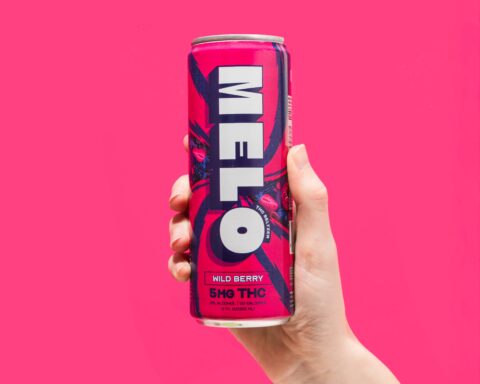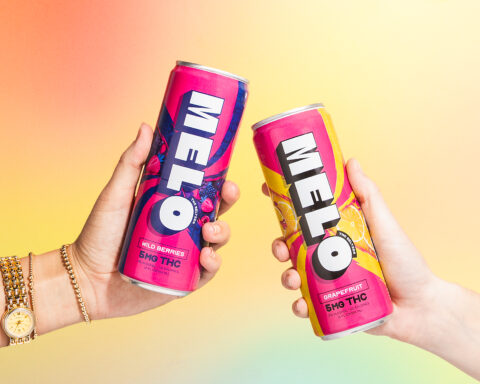Glamour and Image
Glamour and image are potent forces in today’s society, particularly within the realm of entertainment where celebrities wield immense influence. Award shows, with their extravagant red carpets and meticulously curated looks, serve as a prime example of this phenomenon.
The pursuit of perfection, often fueled by social media and unrealistic beauty standards, can be both alluring and dangerous. Celebrities face immense pressure to maintain a flawless image, leading to a culture of obsession with appearance and the constant striving for an unattainable ideal.
Here are some key aspects to consider when analyzing glamour and image in the context of award shows:
* **The Power of Perception:** Award shows meticulously craft a narrative around beauty, success, and aspiration. The red carpet becomes a stage where celebrities showcase their carefully constructed personas, influencing public perception and shaping trends.
Celebrity appearances are scrutinized intensely, with every outfit, hairstyle, and facial expression analyzed and dissected by the media and fans alike. This constant scrutiny can create immense pressure to conform to prevailing beauty norms and expectations.
* **The Commodification of Beauty:** Award shows often blur the lines between artistry and commercialism. The fashion showcased on the red carpet is heavily influenced by sponsorships and endorsements, turning celebrities into walking advertisements for brands.
This commodification of beauty can reinforce unrealistic ideals and create a sense of inadequacy among viewers who may feel pressured to emulate these unattainable standards.
* **The Price of Perfection:** The relentless pursuit of perfection can take a toll on the mental and physical well-being of celebrities.
Pressure to maintain a flawless image can lead to eating disorders, body dysmorphia, anxiety, and depression. The constant scrutiny and public judgment can be emotionally draining, creating a toxic environment that prioritizes appearance over substance.
* **Challenging Norms:** There are growing movements within the entertainment industry challenging traditional notions of beauty and glamour.
Celebrities are increasingly embracing body positivity, diversity, and authenticity. Award shows have begun to reflect this shift, showcasing a wider range of body types, ethnicities, and gender expressions on the red carpet.
While award shows can perpetuate harmful beauty standards, they also provide a platform for challenging these norms and celebrating individuality.
The conversation surrounding glamour, image, and the price of perfection is evolving, with increasing awareness of the importance of mental health, body acceptance, and genuine self-expression.
Glamour and image are inextricably intertwined, forming the building blocks of a carefully curated public persona in the realm of entertainment and beyond.
The concept of *glamour* often conjures images of dazzling appearances, luxurious lifestyles, and an air of captivating allure. It’s about creating an aspirational aesthetic that captivates audiences and fuels imagination.
In contrast, *image* refers to the carefully constructed representation of oneself presented to the public. It encompasses everything from physical appearance to personal branding, carefully chosen words, and calculated actions designed to project a specific message or feeling.
For celebrities, especially those gracing red carpets at award shows, **glamour** and **image** become paramount tools in navigating the public sphere.
The red carpet itself serves as a stage for showcasing meticulously crafted personas. Every outfit, accessory, hairstyle, and even facial expression is scrutinized by the media and fans alike. It’s a performance where celebrities strive to embody a desired image that aligns with their career aspirations and public perception.
Award shows offer a unique opportunity for celebrities to strategically manipulate their **image**. A carefully chosen gown, for instance, might convey elegance, power, or even rebellion depending on the context and the wearer’s intent.
Beyond visual aesthetics, *image* is also cultivated through carefully constructed narratives and public pronouncements. Award show acceptance speeches, interviews, and social media interactions all contribute to shaping a celebrity’s persona.
A witty quip can solidify a reputation for humor, while a heartfelt message about philanthropy can emphasize compassion. These calculated choices aim to influence how the public perceives them and ultimately shape their career trajectory.
In this high-stakes environment, the pursuit of glamour and the curation of **public persona** become intertwined strategies for success, recognition, and lasting impact.
Glamour extends far beyond the shimmering lights and velvet ropes of the red carpet. It’s a multifaceted concept woven into the very fabric of our society, influencing how we perceive ourselves and the world around us.
In its essence, glamour embodies an aura of sophistication, allure, and desirability. It’s a carefully constructed image, often meticulously curated through fashion, beauty standards, and carefully crafted narratives.
But beyond the superficial glitz, glamour holds deeper implications. It taps into our innate desire for beauty, perfection, and aspiration. We are drawn to its promise of transformation, of embodying an idealized version of ourselves.
The entertainment industry, with its focus on celebrity and spectacle, has become synonymous with glamour. Red carpet events, with their extravagant gowns and dazzling jewels, epitomize this allure.
Celebrities, as cultural icons, embody the ideals of glamour. Their every move is scrutinized, dissected, and imitated. They set trends, influence fashion choices, and shape perceptions of beauty.
However, it’s crucial to recognize that glamour is not without its pitfalls. The pursuit of an idealized image can be damaging, leading to unrealistic expectations, body dysmorphia, and a constant sense of inadequacy.
Moreover, the commercialization of glamour has led to a consumerist culture where beauty products and services are marketed as essential tools for achieving happiness and success.
Therefore, it’s important to approach glamour with a critical lens. While appreciating its artistry and allure, we should also be mindful of its potential downsides and strive for a more inclusive and realistic understanding of beauty.
Celebrities as Cultural Icons
Celebrities occupy a unique space in our cultural landscape. They transcend their roles as entertainers and become cultural icons, influencing trends, shaping perceptions, and impacting societal norms.
The allure of celebrities stems from their perceived perfection – their flawless appearances, luxurious lifestyles, and seemingly charmed lives. This idealized image allows fans to project their aspirations and desires onto these individuals, making them aspirational figures.
As influencers, celebrities wield significant power over consumer behavior. Their endorsements, fashion choices, and lifestyle preferences are closely followed by millions, often driving sales and shaping trends in industries ranging from fashion and beauty to technology and travel.
Celebrities also serve as trendsetters, setting the bar for what is considered fashionable, desirable, and acceptable within a particular culture. Their hairstyles, makeup looks, clothing styles, and even language choices are often imitated by fans seeking to emulate their idols.
The influence of celebrities extends beyond material trends. They can shape perceptions on important social issues, advocate for causes they believe in, and raise awareness about global challenges. Their platform allows them to amplify voices that may otherwise go unheard, influencing public opinion and driving social change.
However, the immense power wielded by celebrities also comes with responsibility. The choices they make and the messages they convey can have a profound impact on their followers, particularly impressionable young people. It is crucial for celebrities to be mindful of their influence and use their platform ethically and responsibly.
Celebrities occupy a unique space in our culture, transcending their roles as performers or public figures to become cultural icons. They shape trends, influence opinions, and hold immense power in the realm of popular culture.
Their impact on pop culture is multifaceted and profound. Firstly, celebrities act as trendsetters, influencing fashion, music, language, and even lifestyle choices. From the clothes they wear to the products they endorse, their preferences are often emulated by fans worldwide. This creates a ripple effect that permeates mainstream consciousness.
Moreover, celebrities wield significant influence over public opinion and societal values. Through their social media platforms and public appearances, they can raise awareness about important issues, advocate for causes, and shape perceptions on a global scale. Their endorsements can make or break products, and their words can spark conversations that resonate far beyond the entertainment industry.
The glamorous world of Hollywood awards shows exemplifies the cultural impact of celebrities. These events are not merely celebrations of artistic achievement; they are spectacles that capture the imagination of millions worldwide. Red carpet moments become iconic images, fashion choices are dissected by fashion critics and fans alike, and every word uttered by stars is scrutinized and analyzed.
These award shows reinforce the power dynamics between celebrities and their audiences. They provide a platform for stars to showcase their talent and persona, solidifying their image in the public eye. The awards themselves are symbols of recognition and validation, further amplifying the status and influence of the recipients.
Ultimately, celebrities as cultural icons play an undeniable role in shaping the landscape of popular culture. They are trendsetters, influencers, and storytellers who captivate our imaginations and shape our perceptions of the world around us.
Celebrities have long been recognized as cultural icons, shaping trends, influencing opinions, and embodying ideals both aspirational and controversial.
Their images are plastered across magazines, their voices echo through media channels, and their actions are dissected by the public eye. This pervasive presence grants them a unique power to impact society, making them influential figures in matters ranging from fashion and beauty to politics and social justice.
Celebrity activism, in particular, has become increasingly prominent in recent years.
-
Utilizing their platforms for social change, celebrities leverage their fame to raise awareness about important issues, mobilize support for causes, and advocate for policy reform.
-
From advocating for environmental protection to championing LGBTQ+ rights, celebrities are using their voices to amplify marginalized communities and push for positive societal transformations.
This activism can take many forms:
-
Public endorsements and statements
-
Charitable contributions and fundraisers
-
Direct involvement in grassroots campaigns
-
Using their artistic platforms to create awareness and promote social messages
The impact of celebrity activism is multifaceted:
-
It can raise awareness about important issues, shedding light on societal problems that might otherwise go unnoticed.
-
Celebrity endorsements can lend credibility and legitimacy to causes, encouraging wider public support and participation.
-
Their actions can inspire others to get involved, creating a ripple effect of positive change.
However, it is important to acknowledge the potential downsides:
-
The “slacktivism” criticism, where celebrity support might be perceived as superficial or lacking genuine commitment.
-
The risk of overshadowing the voices and experiences of those directly affected by the issue.
Ultimately, the effectiveness of celebrity activism depends on several factors, including the authenticity of their involvement, the strategic alignment of their efforts with grassroots movements, and the genuine impact they have on policy and social change.
The Red Carpet Experience
The red carpet experience transcends a mere walk to an event; it’s a meticulously crafted stage where narratives unfold, captivating audiences worldwide. It’s a convergence of glamour, artistry, and the insatiable human desire for spectacle.
Celebrities, adorned in haute couture, become living embodiments of dreams, aspirations, and fantasies. Their sartorial choices spark conversations, ignite trends, and offer glimpses into their evolving personas. A carefully selected gown or an audacious ensemble can make a statement louder than words, narrating stories of empowerment, rebellion, or sheer extravagance.
The red carpet becomes a platform for self-expression, allowing stars to curate their public image through calculated gestures, witty banter, and strategically posed photographs. It’s an opportunity to showcase not only talent but also personality, charm, and a certain je ne sais quoi that captivates the imagination.
Furthermore, the red carpet isn’t solely about individual narratives; it fosters connections and creates shared experiences. The anticipation, the flashes of cameras, the hushed whispers among onlookers, all contribute to a collective sense of excitement and wonder. It becomes a cultural phenomenon, a shared moment in time that transcends geographical boundaries.
Beyond its entertainment value, the red carpet also serves as a mirror reflecting societal values, trends, and aspirations. The choice of attire, the messages conveyed through accessories, and even the interactions with journalists offer insights into the zeitgeist. It’s a reflection of our collective desires, anxieties, and evolving notions of beauty and success.
In essence, the red carpet experience is more than just a walk down a red path; it’s a carefully orchestrated symphony of storytelling where glamour, artistry, and human drama intertwine to create an unforgettable spectacle.
The red carpet experience is more than just a walk down a brightly colored pathway. It’s a carefully orchestrated spectacle that blends **celebrity**, **fashion**, and media to create a cultural moment.
Award shows, with their elaborate red carpets, serve as the ultimate platform for this phenomenon.
Here, celebrities transform into walking works of art, using fashion as a potent form of expression.
Each gown, each accessory tells a story, reflecting individual personalities, career achievements, or even political stances.
Consider the bold choices that make headlines:
- A daring silhouette that pushes boundaries
- An unexpected color combination that sparks conversations
- A vintage piece that pays homage to a legendary icon
These sartorial statements are dissected and debated by fashion critics, bloggers, and fans alike.
They become part of the cultural dialogue, shaping trends, influencing designers, and even impacting public perception.
The red carpet experience is a microcosm of our fascination with celebrity culture.
It allows us to indulge in fantasies of glamour and aspiration while simultaneously engaging with deeper conversations about identity, self-expression, and the power of visual communication.
The red carpet serves as more than just a pathway; it’s a theatrical stage where glamour and celebrity converge. It’s a spectacle designed to capture attention, generate buzz, and create lasting memories. Award shows wouldn’t be the same without this iconic element.
Throughout history, award shows have witnessed moments of unparalleled grandeur and drama on the red carpet. These are the events that transcend mere entertainment and become ingrained in pop culture lore.
Iconic Looks:** From Marilyn Monroe’s shimmering 1953 Academy Awards gown to Audrey Hepburn’s elegant Givenchy ensemble at the 1961 Oscars, certain outfits have become synonymous with red carpet history. These sartorial masterpieces often spark conversation and influence fashion trends for years to come.
**Daring Statements:** The red carpet is a platform for celebrities to express themselves beyond their on-screen personas. From Lady Gaga’s meat dress at the 2010 MTV Video Music Awards to Bjork’s swan gown at the 2001 Academy Awards, daring fashion choices have become unforgettable talking points.
**Unpredictable Moments:** Sometimes, it’s not the outfits but the unexpected events that make a red carpet experience truly memorable. Jennifer Lopez’s green Versace dress at the 2000 Grammy Awards famously caused a stir, and Kanye West’s interruption of Taylor Swift’s acceptance speech at the 2009 MTV Video Music Awards remains one of the most controversial moments in awards show history.
**Acts of Solidarity:** The red carpet has also become a space for celebrities to use their platform to advocate for social causes. In recent years, attendees have worn black to protest sexual harassment and violence against women, highlighting the importance of using their visibility for good.
These are just a few examples of the memorable moments that have unfolded on award show red carpets. It’s a space where glamour, controversy, fashion, and social commentary intertwine, creating an unforgettable spectacle that captures the essence of celebrity culture.
- Happiness Quotes To Brighten Your Mood And Life - April 13, 2025
- Moving On Quotes For Healing, Growth, And Letting Go - April 13, 2025
- Funny Quotes To Bring Laughter And Joy To Your Day - April 13, 2025



